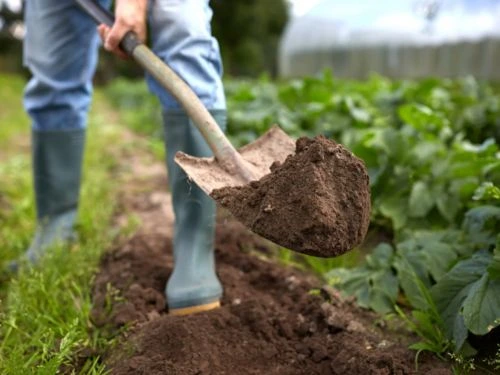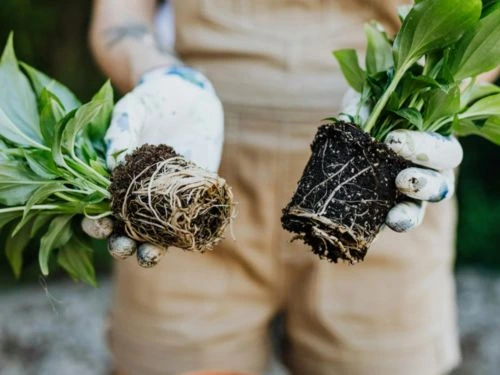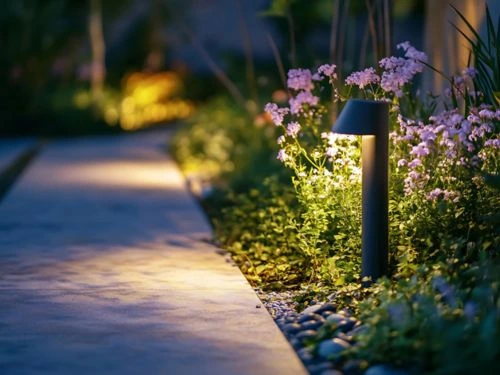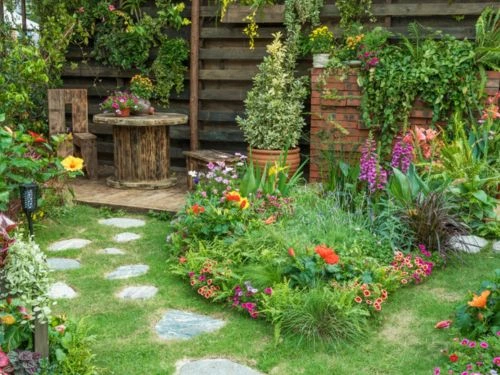Redesigning a garden is one of the most satisfying home projects you can take on. You create a living space that grows, feeds, and delights the whole family. In 2025, the smartest garden makeovers are equal parts beauty, ecology, and practicality. This guide walks you through everything a pro would do, from planning and soil health to hardscaping, plant choices, irrigation, lighting, and the tools and products that make the work easier. It includes the latest trends, tested product recommendations, and clear, step-by-step actions so you can redesign your garden with confidence.
How to Redesign Your Garden Like a Pro in 2025
1. Plan Like a Pro: Clarity Before You Dig
Start by sketching a simple plan of your yard. Mark existing features you want to keep, sun and shade patterns, prevailing wind directions, access points, and where water collects after rain. Decide which areas are for play, dining, vegetable growing, and wildlife habitat. Measure the space and note the soil type and drainage. A clear plan prevents wasted time and money and helps you order the right amount of materials.
Make a list of priorities. Typical priorities include privacy screening, a low-maintenance lawn alternative, a kitchen garden, a play space, and outdoor seating. Rank those by importance and by how soon you want to use them. Break the project into phases that fit your time and budget. Small, high-impact changes first will make the space feel transformed while you work on larger elements.

2. Start with the Soil: The Foundation of a Healthy Garden
Soil is the engine of the garden. Take a few core samples around the yard, mix them, and check texture and drainage. A simple DIY soil test or a lab test will tell you pH and nutrient status. If the soil is compacted, core aeration or double digging in small beds will help roots take hold. Add well-aged compost to build structure and microbial life. Compost increases water retention in sandy soils and improves drainage in clay soils.
Use raised beds where soil quality is poor or where you want fast results. A standard raised bed height of 12 to 18 inches works for most vegetables and perennials. Fill beds with a mix of topsoil, compost, and a light amendment, such as coir or well-composted manure.
3. Design Principles Pros Use
Think in layers. A balanced garden has backbone structure, mid-layer planting, and seasonal color. Backbone structure comes from trees, hedging, and evergreen shrubs that provide year-round form. Mid-level shrubs and large perennials provide shape and volume. Seasonal bulbs and annuals deliver color and surprise.
Pay attention to sight lines and focal points. A single specimen tree, a water feature, or a sculptural pot can become an anchor your eye returns to. Use repetition of plant shapes and colors to create cohesion. For small gardens, scale is crucial. Choose small leaf textures and fewer, larger plant groupings so the space reads as calm and deliberate.
4. Choose Plants with Purpose: Beauty Plus Function
In 2025, the biggest plant idea is to use native, climate-appropriate species to reduce water use and support wildlife. Native perennials and nativars have become the default recommendation because they offer resilience and habitat benefits. The Royal Horticultural Society and other leading garden organizations highlight the rise of native and low-water plantings for more sustainable gardening.
Pick a mix of evergreen structures, pollinator-friendly flowering perennials, and edibles for your kitchen garden. For low-maintenance borders, choose perennials known to multiply and fill space, such as daylilies, coneflowers, sedum, and catmint. These choices deliver reliable color and reduce replanting. Sources that catalog low-maintenance perennials and container plants are helpful when choosing hard-working species.
If drought is a concern, design with water-wise plants such as lavender, salvias, drought-tolerant grasses, and many native groundcovers. For shade, choose hostas, heucheras, and woodland bulbs that thrive with less sun.

5. Hardscape Smart: Build Once, Enjoy Forever
Hardscaping creates usable outdoor rooms. Paths, patios, retaining walls, seating ledges, and pergolas shape how you move and use the garden. Choose materials that fit your home and local climate. Porcelain pavers are low-maintenance and frost-resistant. Reclaimed bricks offer instant character. Gravel works well for casual walkways and allows for fast drainage.
When designing patios and dining areas, position them with sun and wind in mind. For summer shade, consider a pergola with a retractable canopy or trainable vines such as wisteria for natural shade. Ensure surfaces slope away from the house to prevent drainage problems.
Pro tip: plan utilities up front. If you will add lighting, irrigation, or a fountain, lay conduits and irrigation lines as you build the hardscape. It costs far less to hide those elements during initial construction than to retrofit later.
6. Irrigation and Water-Wise Practices
Smart irrigation saves water and time. In 2025, smart sprinkler controllers and drip systems will be widely recommended for efficient watering. Consumer Reports and other testing organizations name controllers from Rachio, Rain Bird, and Orbit as top smart irrigation options because they adjust schedules based on local weather data and soil conditions. Smart controllers reduce wasted water and simplify seasonal adjustments.
Use drip irrigation or soaker hoses in beds and containers to deliver water directly to root zones. Pair a drip with a timer or smart controller and zone plants by water need to avoid overwatering drought-tolerant areas. Collect rainwater in barrels and use it for container watering. Mulch deeply in beds to retain moisture and suppress weeds.
7. Lighting and Atmosphere
Garden lighting extends usability after sunset and adds drama. Layer lighting into ambient, task, and accent zones. Use low-voltage LED fixtures for safety and efficiency. Line pathways with low fixtures, illuminate steps, and use uplights on specimen trees for evening focal points. Accent lighting for a water feature or sculpture creates a sense of occasion.
Consider solar lighting for casual areas and decorative fixtures. Solar has improved in 2025 with higher-performance panels and longer run times, making it viable for many garden uses.

8. Furniture, Containers, and Finishing Touches
Choose outdoor furniture for comfort and durability. Brands such as Fermob and Kettal, as well as mainstream options like IKEA and Home Depot, offer a wide range from budget to premium. For a family-friendly yard, pick materials that stand up to weather and are easy to clean. Aluminum and teak are popular for their low-maintenance properties.
Containers allow instant color and flexibility. Use a consistent color palette for pots to create cohesion. Self-watering containers are especially helpful for busy households and for balconies. Mix textures with ceramic, woven resin, and metal for interest.
Finishing touches matter. Add water-resistant cushions, bedside storage benches that double as seating, and attractive tool storage to keep everything tidy. A compact potting bench organizes soil, pots, and hand tools, making routine tasks more enjoyable.
9. Tools and Products Pros Recommend
Invest in a few quality tools. A good shovel, pruning shears, a durable hose, and a reliable wheelbarrow will handle most work. Recent 2024 and 2025 reviews highlight brands and products that consistently perform well in testing. For digging and general use, the Hooyman digging shovel gets top marks for durability and ergonomic design. Fiskars continues to be recommended for pruners, weeding tools, and ergonomic hand tools. Quality hoses, hose reels, and lightweight wheelbarrows make daily gardening much easier.
For irrigation, consider smart controllers such as the Rachio 3 or Rain Bird models that integrate weather data. For cordless power tools, battery platform systems from major tool brands deliver broad compatibility and strong runtime. Compost tumblers and worm bins speed up compost production so you always have good soil amendment on hand.
10. Practical Phasing: How to Do a Redesign Without Overwhelm
A comprehensive garden redo can be done in phases. Start with the bones. Install major hardscape and irrigation in phase one. In phase two, add backbone planting and lawns or lawn alternatives. Phase three is about filling in with seasonal color, containers, and furniture. This approach lets you enjoy parts of the garden early and spreads the cost over time.
If the budget is tight, prioritize drainage and soil health, then plant trees and shrubs that establish over the years and provide instant structure. Annuals and perennials can be added later as budget permits.

11. Maintenance Made Simple
Design for low maintenance. Group plants by watering needs, use mulch liberally, and choose disease-resistant varieties. Create easy access to beds with clear paths for wheelbarrows and maintenance tools. Use automatic timers for irrigation and set seasonal reminders for pruning and feeding.
For organic pest control, consider integrated approaches such as encouraging predators, using row covers, and choosing tolerant cultivars. Regular light maintenance beats sporadic marathon gardening.
12. Budgeting and Sourcing Plants and Materials
Set a realistic budget for each phase. Hardscaping and irrigation account for much of the cost, so get quotes for those first. For plants, mix specimen purchases with budget-friendly perennials that multiply. Many nurseries and online plant sellers offer sales in spring and late fall. Local plant swaps and reputable plant rescues can be wonderful, low-cost sources of well-adapted specimens.
Buy quality soil amendments and avoid overbuying expensive topsoil. Sourcing reclaimed materials such as bricks or stone can add character at a lower cost.
13. When to Call a Pro and When to DIY
DIY works well for planting, mulching, building raised beds, and installing containers. Hire professionals for major grading, drainage fixes, electrical and complex irrigation systems, and for any work requiring permits. If you are unsure about tree removal or structural retaining walls, bring in an expert. Many landscape designers offer consultations where they provide a plan and a shopping list you can implement yourself, which is a great middle ground.
14. Sustainability and Wildlife-Friendly Design
Design that supports pollinators and wildlife is both beautiful and environmentally friendly. Include native shrubs, a variety of flowering times, and water sources such as shallow birdbaths. Avoid invasive species and choose plants that support local pollinators. Rain gardens and permeable paving reduce runoff and recharge groundwater.
15. 2025 Trends to Consider
This year, the major trends include a move toward native plantings, reimagining lawns as multifunctional or meadow areas, and flexible outdoor rooms that blur the line between living room and landscape. Nostalgia is also influencing plant and furniture choices with heirloom vegetables, classic garden furniture silhouettes, and curated, cozy outdoor corners gaining traction. Garden design experts and horticultural societies list these themes among the top trends for 2025.
Example Shopping List and Product Picks
- Shovel: Hooyman digging shovel for heavy work.
- Pruners: Fiskars bypass pruners for clean cuts.
- Smart irrigation: Rachio 3 or Rain Bird smart controller for automated, weather-aware watering.
- Raised bed kit: galvanized steel or cedar kits from mainstream garden retailers.
- Compost tumbler: for fast compost and easy turning.
- Mulch and compost: local garden center compost or well-rated bagged compost.
- Lighting: low-voltage LED path lights and a spotlight for feature trees.
- Seating: weather-resistant set from a reputable retailer, or mix-and-match thrifted pieces for personality.
Final Checklist: A Pro’s Quick Review
- Make a clear, measured plan with priorities.
- Test and improve your soil first.
- Install long-lasting hardscape and proper drainage.
- Use smart irrigation and mulch to save water.
- Choose native, low-maintenance plants for long-term resilience.
- Buy a few quality tools and add accessories for comfort.
- Phase the redesign to match the budget and time.
- Protect pollinators and avoid invasive plants.
- Get a professional for structural, electrical, or permit work.
- Enjoy the garden and adapt the plan as plants mature.
Take the First Step Today
Redesigning your garden like a pro is a process of planning, making thoughtful choices, and doing the work in sensible stages. Focus on soil and structure first, then build layers of plant life that deliver beauty and function across seasons. Use smart irrigation and a few reliable tools to reduce routine work. By focusing on sustainability, simple maintenance strategies, and a clear plan, you will create an outdoor space that feels polished, personal, and practical.

